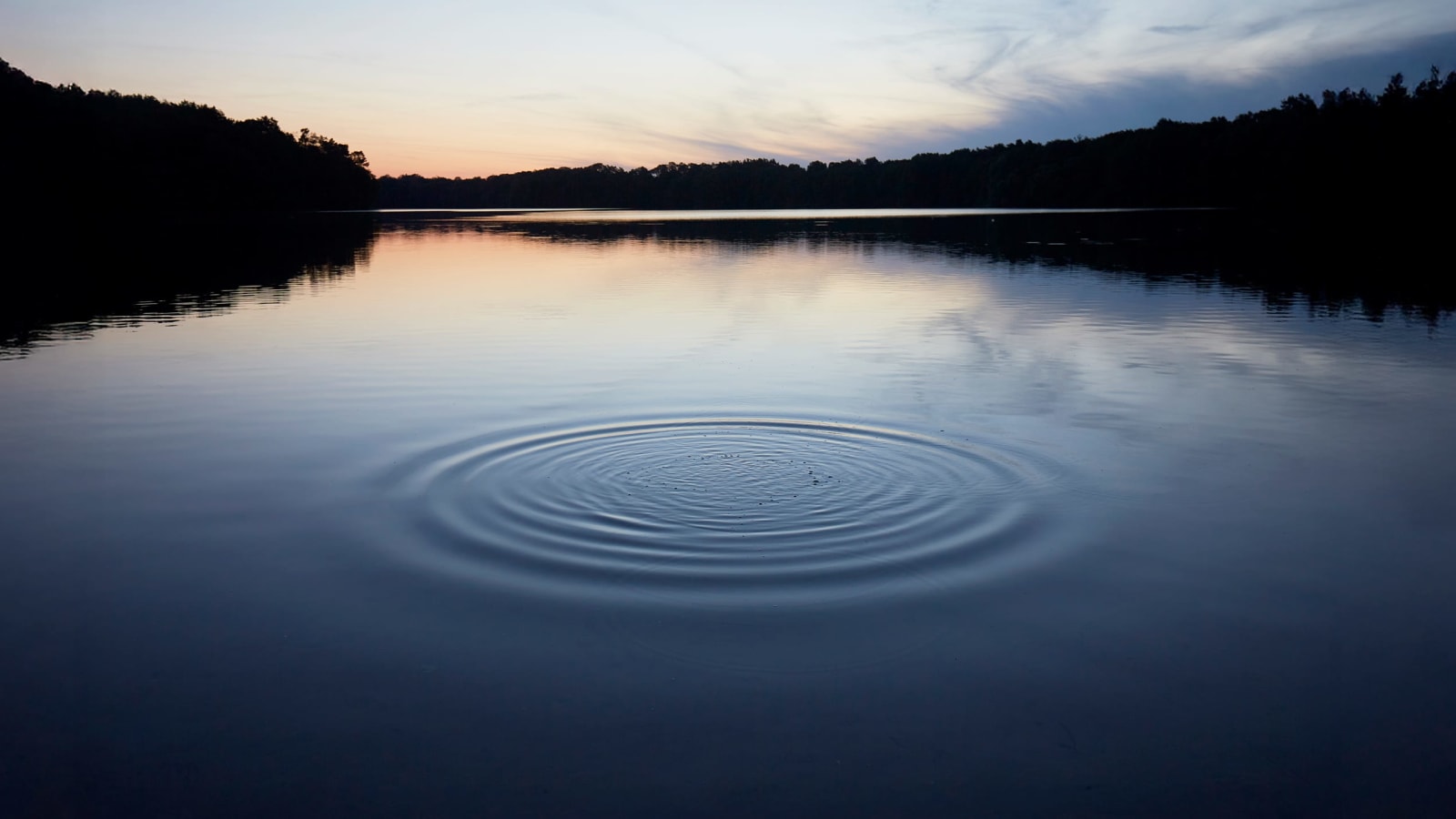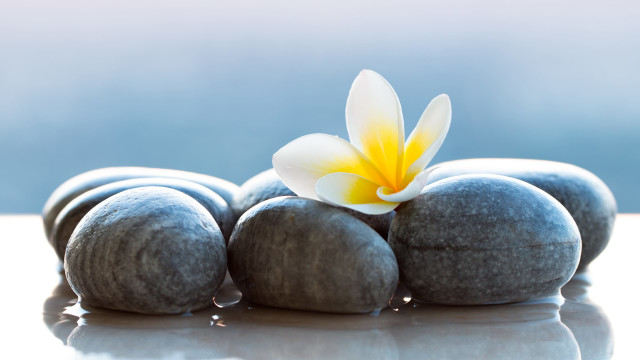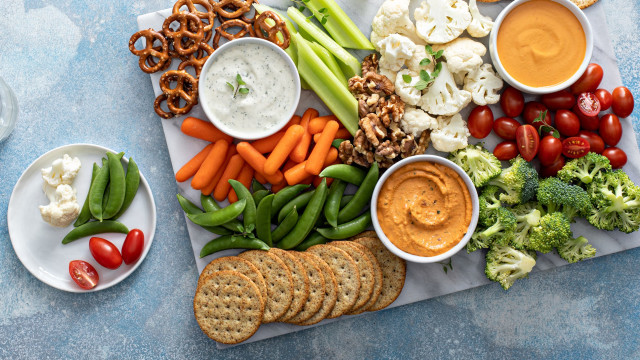Meditation Versus Mindfulness

If the words “mindfulness” and “meditation” conjure scenes of serene people sitting cross-legged on the floor, you’re not alone. Mindfulness and meditation often overlap — in fact, mindfulness meditation is one of the most popular forms of meditation practiced today. But these two ancient traditions are not indistinguishable. While mindfulness refers to the mental awareness one achieves when paying attention to the present moment without judgment, meditation refers to a specific practice of training the mind to achieve heightened awareness, relaxation, and mental stillness. And though they are complementary, research has shown that practicing them together and separately can boost happiness, mental health, and wellbeing.
What Is Meditation?
Meditation as we know it today can be traced back to India in 1500–1200 B.C.E., where the earliest known records of meditation techniques and philosophies were detailed in the Vedas, ancient religious texts composed during that period. (The word “meditation” comes from the Latin word “meditari” for “ponder,” which, in turn, drew inspiration from the Sanskrit word for meditation, “dhyana,” meaning “to contemplate.”) Buddhism, which arose in northern India several hundred years later, in 6th century B.C.E., incorporated the use of meditation within its doctrines. As Buddhism gained favor and spread throughout Asia, it popularized meditation along with it.
Over time, various types of meditations, each one slightly different from the other, have developed — including Vedic, Transcendental, Vipassana (a form of Buddhist meditation), loving kindness (also called metta meditation), or zazen (Zen Buddhist meditation). Most recently, mindfulness meditation, which combines mindfulness techniques into a meditation practice, has become hugely popular in the West, thanks largely to hundreds of research studies demonstrating its numerous health benefits, like reducing stress and depression and improving immunity and general wellbeing.
Meditation’s many styles have made it challenging for scholars to agree on a single definition. Instead, meditation is often described more broadly as a mind-body practice that involves focusing inward and sustaining attention on a thought, image, sensation, or feeling (including one’s breath) for a specific length of time. And, yes, it is traditionally done in a comfortable cross-legged position (with hands in your lap or on your legs), though it can also be practiced while lying supine on the floor, sitting upright in a chair, or even walking. With practice, you can truly start to enjoy the benefits of a daily meditation practice.
How to Meditate
Despite the variety of meditation techniques, there are key components that appear in each one. In general, meditation begins by finding quiet and settling the mind and body through relaxed, deep breathing. The idea is to draw your focus away from distractions in your environment and turn inward toward an image, a mantra, or the sound and rhythm of your breath.
All meditation asks is that you work toward a sense of “detached observation”— meaning that though you remain aware of your environment, you don’t get too distracted by the thoughts in your head or the things around you. This allows you to live more fully in the present moment and see things how they really are. To get there, you can use a range of tools — there are hundreds, according to a 2021 study published in the journal “Mindfulness.” Researchers reviewed more than 300 meditation techniques and interviewed dozens of meditators to come up with a list of 10 key commonalities between all types of meditation. First and foremost, you start with a settling of the body and mind.
“Your body needs to settle in order to become more present and aware of what’s going on during the meditation experience,” says Vishvapani Blomfield, Roundglass Living mindfulness teacher and director of Mindfulness in Action. Sitting or lying down can help still the body, but calming the mind can be trickier: “Our minds are always so busy, so one of the most important things you can ask yourself as you prepare to meditate is ‘What will help me settle my mind right now?’” says Blomfield. For some, that may mean closing your eyes and focusing on your breath; for others, light yoga stretches, like a seated twist, might do the trick. “Personally, I like to do a bit of movement, which helps me move from thinking to sensing,” says Blomfield.
Common Meditation Techniques
Once you get comfortable with stillness, you can move on to the next steps. As noted, meditations vary, but there are common techniques. In general, you can either be in a comfortable seated position or lying down with eyes closed or a soft gaze.
- Stop to notice sensations throughout your body — without trying to change or control them. You might do a body scan, finding places of tension and then releasing those emotions and feelings with the exhalations of your breath.
- Then comes the practice of focusing your attention on a single sensation (like the rise and fall of your breath), a mantra, or a concept like compassion or loving kindness. With the latter, imagine cultivating those loving thoughts for yourself, your friends, your neighbors, and your coworkers, then all the way out to the whole world.
- As you move through these steps, your mind will likely wander. That’s normal. Simply observe how thoughts come and go without getting caught up in them; allow them to pass, then focus your attention back on your chosen sensation or concept, returning to the present moment.
- Whenever you’re ready — it might be after one minute, three minutes, or 30 minutes — you can then open your eyes and end your practice.
There’s no “right time” to meditate, and though it’s often easier first thing in the morning when your brain isn’t so engaged with the day’s activities, the best time to practice is when you can carve out time to do so, says Blomfield.
Ready to try a meditation? This short and easy breath meditation from Roundglass research lead and neuroscientist David Vago, Ph.D., is a great way to start. When you’re ready to advance with your practice, consider adding visualizations to your meditations, which can help guide your mind and strengthen your goals and intentions.
What Is Mindfulness?
Mindfulness is a concept that dates back to the Buddha’s teachings, where it plays a central role in developing a path toward enlightenment and the end of personal suffering. In today’s more secular understanding, mindfulness means paying attention to the present moment, without judgment, and focusing awareness on each feeling, thought, and sensation as it arises. So while meditation is a more formal practice, mindfulness is a way of being and living, says Yael Shy, Roundglass Living meditation teacher and mindfulness expert. “I can be mindful while I’m cooking or tying my shoes or even when I’m talking to people,” she says. “The skill of mindfulness is learning how to cut down the number of distractions in front of you so that you’re really paying attention to what you’re doing and how you’re feeling.”
The beauty of mindfulness is that while all meditation requires some mindfulness, being mindful can be experienced without meditating. “Mindfulness is a faculty you can use throughout your day,” says Blomfield. Better yet, research shows mindfulness, with or without meditation, is good for our health and wellbeing.
Being Mindful Without Meditating
Practicing mindfulness helps us appreciate even the smallest sensations, objects, and experiences that we might otherwise not notice or fully take in. It allows cultivation of greater present-moment awareness, so we don’t get stuck ruminating about the past or worrying about the future. We learn to observe and be with our emotions so that negative ones (like worry, stress, and anxiety) don’t overwhelm us. Numerous studies have found that developing mindfulness increases positive emotions, reduces negative ones, eases anxiety and depression, and generally makes us happier, kinder, and more compassionate.
It helps to think of mindfulness as a personality trait that can be worked on and carried with you wherever you go. You can draw upon it whether you’re walking, running, washing dishes, or sitting still. “You can begin by simply paying attention as you slowly sip your glass of water or your coffee before you drink it,” says Shy. Notice what you see, feel, hear, taste, and smell. “The goal is to slow yourself down so that you’re not distracted while you’re eating and drinking and, instead, are actually tasting and sensing every bit of it.”
Like meditation, mindfulness is best achieved when your body and mind are at least somewhat settled. “I like to say mindfulness is noticing with a degree of calm,” says Blomfield. That doesn’t mean allowing yourself to become so relaxed that you become passive to the sensations you’re experiencing. “It requires energy and some discipline to become really mindful,” he says, although anyone can develop those skills. To get started, try something as simple as feeling your feet on the floor. “Literally, take a break and do that regularly,” Blomfield says. “And ask yourself, ‘What am I feeling right now?’ That’s mindfulness.”
Try this course: A Modern Guide to Mindfulness with Roundglass Living meditation teacher Curtis Smith.
Mindfulness as a Way of Living
When mindfulness becomes part of your daily routine, it’s like a secret superpower you can activate whether life throws you curveballs or trots along peacefully. It can help you stay calm, acting as a buffer during times of stress and helping you feel more alive and present during moments of happiness. When meditation is paired with mindfulness, its power is amplified: One study found that on days when people meditated, they responded more mindfully throughout the day, which promoted greater wellbeing.
“I was experiencing lots and lots of anxiety from the time I was very young,” says Shy. “I was having panic attacks several times a week by the time I was in college. Meditation and mindfulness helped me to get to the root of what was causing some of my deep, deep fears. Practicing them together helped me rewire my entire system.” Today her panic attacks are a thing of the past. “I still feel anxious from time to time, but overall, my regular practice soothes my nervous system, so I respond differently when scary things happen.”
Of course, the benefits of daily mindfulness and meditation will vary from person to person, depending on the consistency and depth of your practice. Have fun exploring! As you advance beyond beginner breathwork meditations, there are so many others to choose from: guided meditations, mantra meditations, moving meditations, and mindful meditations, to name just a few.
If you ever start to feel overwhelmed, remember, all it takes is something small, like really sensing every sip of water instead of gulping your glass as you check messages on your phone — or taking a minute to simply feel the ground beneath your feet and the sun on your face before rushing immediately to your next appointment. Try carving out a few minutes of me time to sit on the floor of your living room for a short breath meditation. It doesn’t matter what you choose to do, just plant the seed — and then watch as your happiness and wellbeing begin to grow and thrive.
Key Takeaways:
- Cultivating mindfulness increases positive emotions, reduces negative ones (like anxiety and depression), and generally makes us happier, kinder, and more compassionate.
- The best time to meditate is the time you can carve out for it. Make time to meditate.





